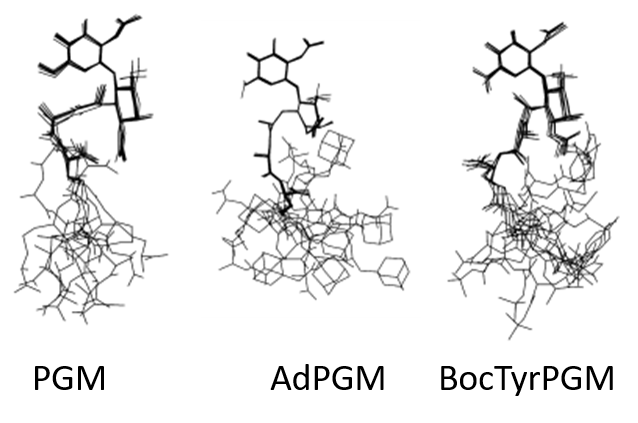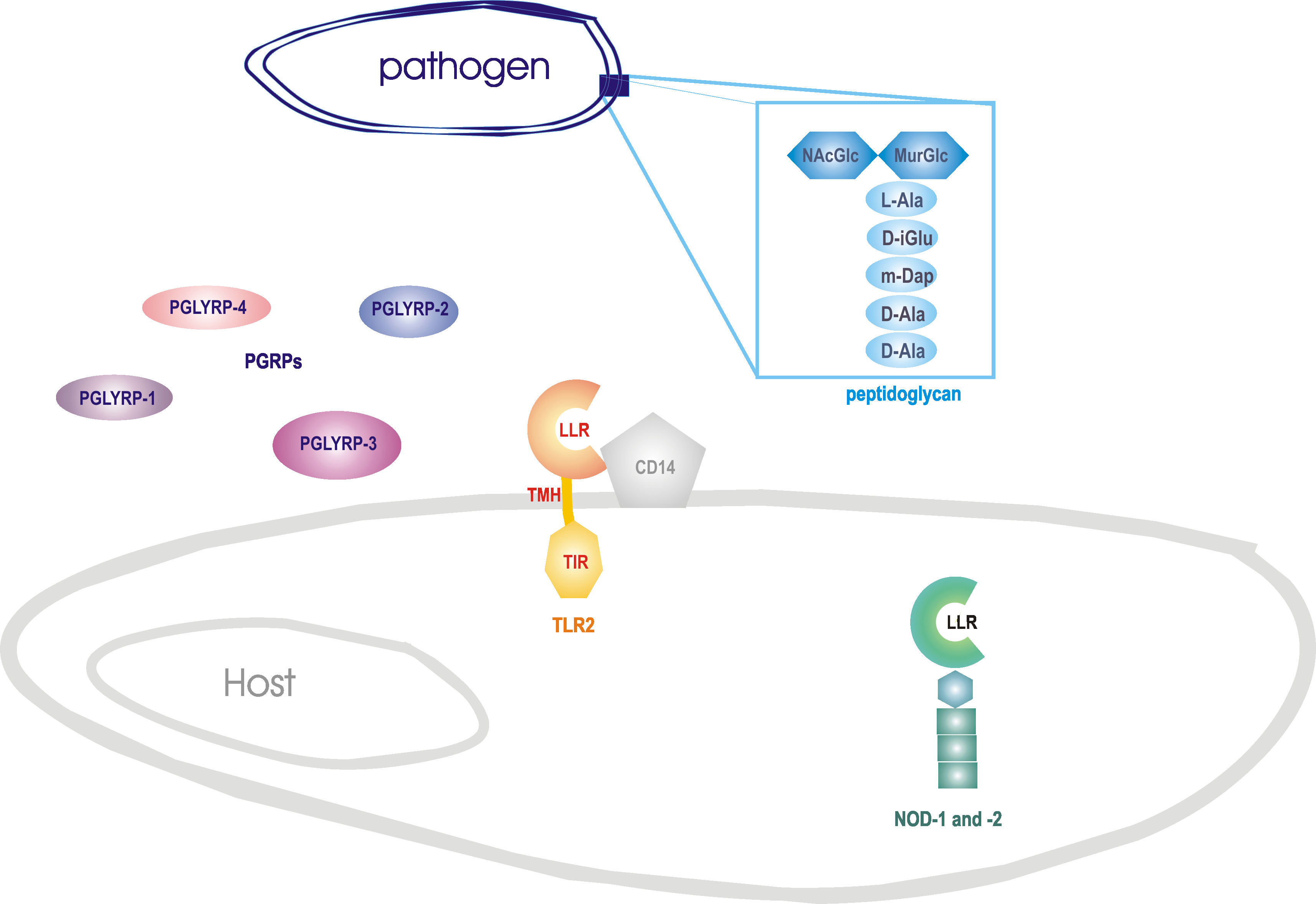
Research > Peptidoglycan based immune adjuvants
Stimulation of the immune system is important in fighting infectious
diseases and cancer both for treatment as well as for prevention using
vaccines. Immune suppression on the other hand is crucial for the
treatment of auto-immune diseases, allergies and organ transplants.
Modern vaccines need adjuvants to initiate protective immune responses
against the antigen. Furthermore the immune response needs to be not
only enhanced, but also directed towards a specific type of immunity.
Such modulation of the immune response can be achieved by activation of
the innate immune system. The innate immunity recognizes unique
molecular signatures of pathogens with the help of innate immune
receptors. These so-called Pathogen Associated Molecular Patterns
(PAMP) act as Danger Signals by recognition on Pattern Recognition
Receptors (PRR), which trigger signal transduction pathways leading to a specific
immune response. Bacterial cell wall peptidoglycan (PGN) is one of the most important molecular patterns recognised by innate immune receptors. Polymeric PGN can stimulate immune defenses even without the presence of an infection, therefore it can act as a very potent adjuvant. Unfortunately, polymeric PGN in traditional vaccines has too many side effects to be used in humans. However, its fragments and derivatives can also elicit immune response. Such fragment is the PGN monomer (PGM) with well-documented immunomodulating properties, however without adverse side effects. It is able to sligthly enhance immune responses and also to modulate both humoral and cellular immunity.
 We have
studied the conformation of lipophilic PGN derivatives in solution with
the help of NMR spectroscopy and molecular modeling. I have found that
while the derivatives have comparable immunostimulating activities as
the base PGM molecule, they assume different conformations on the
peptide stem and preserve well-ordered conformations of the glycan
moiety.
We have
studied the conformation of lipophilic PGN derivatives in solution with
the help of NMR spectroscopy and molecular modeling. I have found that
while the derivatives have comparable immunostimulating activities as
the base PGM molecule, they assume different conformations on the
peptide stem and preserve well-ordered conformations of the glycan
moiety.At that time the biological targets of the PGN fragments were known. Discovery of these sensors has lead to a remarkable expansion of the field of innate immunity.
 The mechanism leading to PGN related
immunostimulation in the host is not yet completely understood, it is
known that recognition via several families of pattern recognition
receptors mediate the immune response such as
The mechanism leading to PGN related
immunostimulation in the host is not yet completely understood, it is
known that recognition via several families of pattern recognition
receptors mediate the immune response such as • Toll-like receptor-2
• NOD-like receptors
• Peptidoglycan Recognition Receptors
C type lectins, such as the Mannose Receptor (MR), also recognize PAMPs. The MR binds carbohydrates, therefore it is a potential target for PGN fragments, however, the involvement of MR in PGN recognition has never been investigated.
In order to capitalize on the immune stimulatory effects of PGN, I use two basic strategies in my research:
1. We are investigating the molecular details of the recognition between PGN fragments and related innate immune receptors. Increased understanding of the interaction could form a basis of designing improved immunomodulators working together with Prof. Dr. Srdjanka Tomič-Pisarovič, Department of Chemistry, University of Zagreb, Croatia.
2. We are characterizing drug delivery systems carrying PGN fragments in order to improve its immunogenic properties.
we are working in co-laboration with Prof. Roman Jerala, Department of Synthetic Biology and Immunology, National Institute of Chemistry, Ljubljana, Slovenia.
We acknowledge support from the Marie Curie Career Integration Grant (303917 PGN-INNATE) for this project.